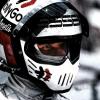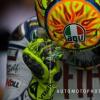To optimise the cars performace, teams chose their gear ratios in such a way that they hit the rev-limiter at the end of the straights. Making it impossible for these cars to overtake other cars as they all have similar top-speeds.
The most recent example is Alonso in Abu Dhabi, where he was stuck behind Petrov for the entire race. During Qualifying Alonso reached a topspeed of 312.9 km/h. During the race, on one of the longest straights in F1 in the slipstream of another (slightly higher topspeed) car, he managed a best of 314.0 km/h compared to Petrovs 316.9 km/h. A mere 1 km/h faster than under normal circumstances. And people wonder why he wasn't able to overtake?
While the track might not have been the best for overtaking, I'm almost sure Alonso would have been able to at least make a serious attempt at overtaking when he would have been able to reach a higher topspeed while driving in the slipstream Petrov. Now there was no way of him closing in on Petrov on the very long straight because he simply wasn't able to reach Petrovs speed under whatever conditions.
This also gets me thinking about the moveable rearwing. When teams continue to set-up their car for maximum performance, they won't go any faster when they activate the moveable rearwing as they would just be hitting the rev-limiter. The only benefit would be that they get to their topspeed faster.
With the F-duct, it was an advantage in topspeed they knew they would have every lap, so ofcourse they would set-up their car to benefit from it. The moveable rearwing will only be benifical while trying to overtake, but for the rest of the race the longer gear ratios necessary to make a real use of it under overtaking will have a negative effect on the cars' performance. So will teams set-up their car to make use of the extra topspeed for overtaking or for performance under normal conditions?
Edited by F.M., 21 November 2010 - 19:30.

















